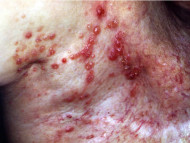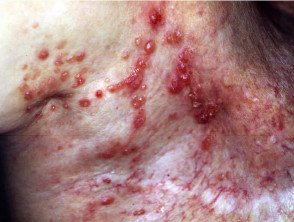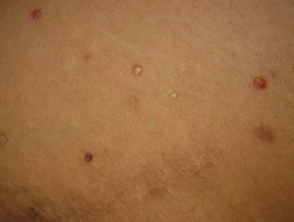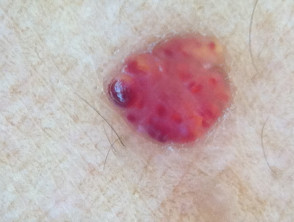What is lymphangiectasia?
Lymphangiectasia, also called lymphangiectases, refers to swollen lymphatic vessels. This can be congenital or acquired.
- Congenital lymphatic malformation is sometimes called lymphangioma.
- Acquired lymphangiectasia arises after the lymphatic glands have been blocked or injured.
What causes acquired lymphangiectasia?
Acquired lymphangiectasia may be associated with:
- Traumatic injury interrupting lymphatic drainage
- Lymph node dissection
- Removal of lymph glands for cancer
- Destruction of lymph glands by cancer.
What does acquired lymphangiectasia look like?
Acquired lymphangiectasia presents as clear or haemorrhagic papules often described like frogspawn. The small bumps tend to ooze a clear or milky fluid after minor injury.
Lymphangiectasia may affect the following sites:
- The armpits after a radical mastectomy
- The thighs after lymph node clearance for cancer
- The vulva after surgery or radiotherapy to cervical cancer
- The penis and scrotum after removal of a tumour at the base of the spine
Secondary lymphangiectases
What problems may arise from acquired lymphangiectasia?
Acquired lymphangiectasia can be painful. The poor lymphatic drainage may lead to bacterial infection (cellulitis).
Are any tests necessary?
In most cases the history and examination findings will be enough to explain the lesions. Skin biopsy may be necessary to confirm the presence of the thin-walled lymphatic vessels.
Imaging and other tests may be necessary to establish whether there is a leak or blockage in the lymphatics.
What treatment is available?
Acquired lymphangioma can be difficult to treat. The affected area must be kept scrupulously clean to reduce the risk of infection. Compression may be useful to reduce swelling caused by lymphoedema. Sometimes, electrosurgery, laser therapy, sclerotherapy, cryotherapy or surgical excision may be attempted.



